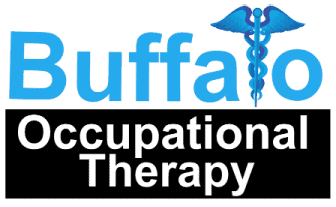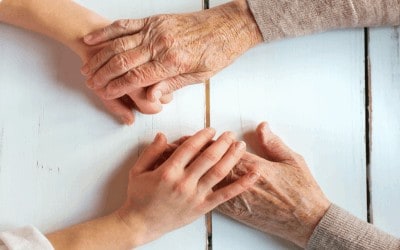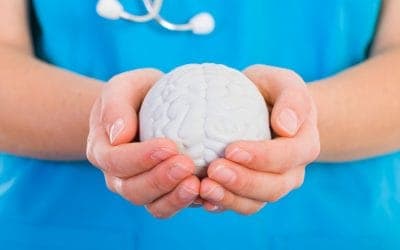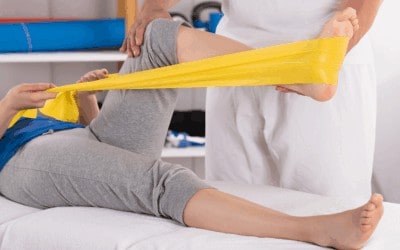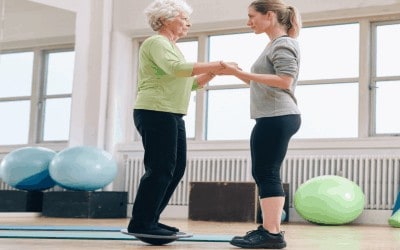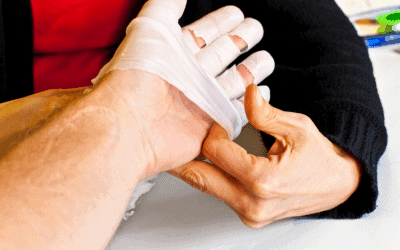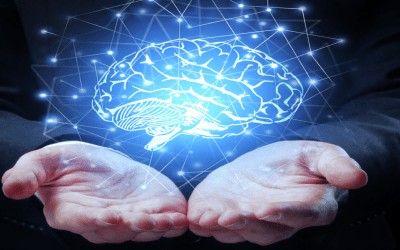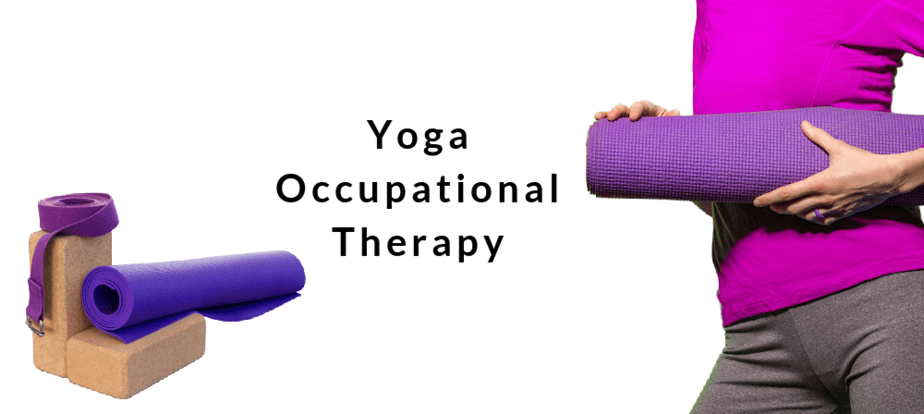

General:
Yoga Occupational Therapy uses principles from yoga practice regarding flexibility, stretching, stability, breathing, meditation, and visualization and applies it to their extensive knowledge of physical restorative medicine to result in treatments for neuromuscular re-education and therapeutic exercise.
Principles of Yoga inform the occupational therapy process and allow patients’ to leverage spirituality and all body system functions and structures (COMP-E Model) in the main effort to restore occupational performance in the 9 domains of occupation.

How should you approach Yoga in Occupational Therapy?
Mind Body Connection
Encouraging people to understand how their mind impacts their body, how their body is moving, and the sensations being experienced. In other words, the mind-body connection works to develop an interaction with the psychological, the somatosensory, and the motor systems (Francis & Cross Beemer, 2019). All three of these components are influenced in the development of self-awareness and self-efficacy (Francis & Cross Beemer, 2019). This process is facilitated by using action directed words and explaining the sensations being experienced in the body throughout each pose (Shaw, 2017). Examples of phrases are “feeling the muscle in the back lengthen as you move into…”, “focusing on the stretching/strengthening sensations in the ____”, or “as you exhale feel the tension in ____ muscles fade away.” In general, encouraging people to be aware of what is happening to their body in each pose and how they are moving.
Focus on Breath and Movement
Yoga encourages one to move with their breath. When performing yoga poses, the person is breathing while moving into a pose, holding a pose, and exiting a pose.
Yoga encourages deep diaphragmatic breathing in order to manipulate the nervous system. The breath can be used to engage the parasympathetic nervous system. When the parasympathetic nervous system is engaged, we tend to have a decreased stress response which allows for a decrease in muscle tension. This leads to improved ability to lengthen the muscles (or stretch). Therefore, if using with patients, the occupational therapy practitioner should ensure the patient understands diaphragmatic breathing and is applying it during each yoga pose.
Sink Breath is a breathing technique which uses the exhale of a breath to muscle lengthening while holding the pose. This can allow one to deepen the stretch as they hold the pose. As the person exhales, they move into deeper stretching (if the muscles are not being stretched enough based on the person’s tolerance). (Shaw, 2017)
Encouraging diaphragmatic breathing as the pose is being held. Poses are typically held for approximately 5-10 breaths or 30 seconds or more (Shaw, 2017).
In yoga, there are various breathing exercises (pranayama) that can be used and applied with patients. It is encouraged the occupational therapy practitioner research their patient’s diagnosis to ensure which breathing exercise is appropriate and if there are any contraindications to using specific breathing exercise.
Understand Muscles Being Strengthened and Stretched in Each Pose
Understand how the muscles are lengthening and contracting in each pose in order to achieve the best benefits. Apply knowledge of isometric, isotonic, eccentric, and concentric muscles contractions to each pose.
Encourage Body Alignment and Safe Movement
Yoga can require transitional movements that if not done correctly, and with body awareness, can lead to injury over time. Apply functional movement and body mechanic principles to ensure safe and effective movement while holding poses and transitioning between poses.
References
Shaw, B. (2017). YogaFit Level 1 Workbook. YogaFit Training Systems Worldwide, Inc.
Francis, A., & Cross Beemer, R. (2019). How does yoga reduce stress? Embodied cognition and emotion highlight the influence of the musculoskeletal system. Complementary therapies in medicine (43), 170-175. https://doi.org/10.1016/j.ctim.2019.01.024

Occupational Therapy Treatment and Documentation Examples
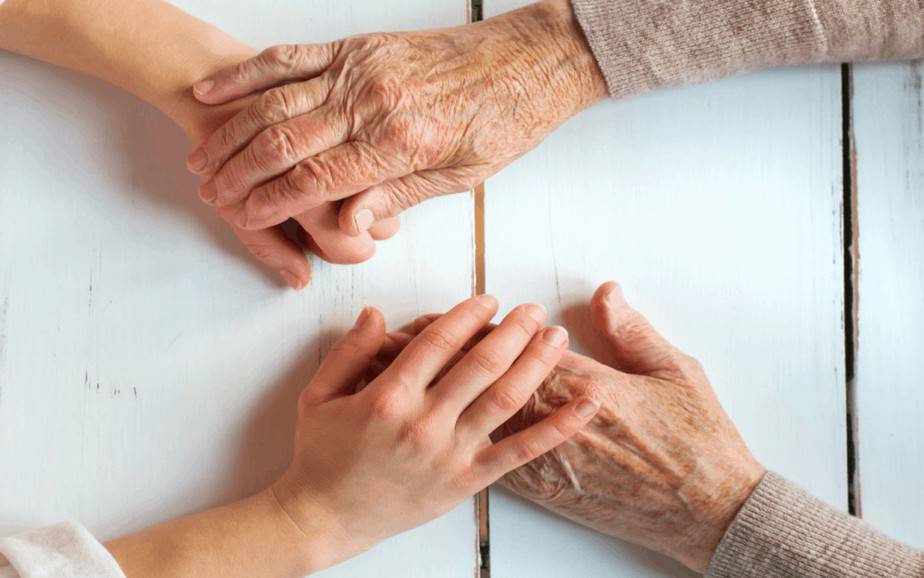
Early Memory Loss and Confusion
Early Memory Loss and Confusion Authored by Michelle Eliason, MS, OTR/L, CKTS, C.D.S.Symptoms of Early Memory Loss and Confusion You Should Take SeriouslyIf you are experiencing signs and symptoms of early memory loss, it is important to take them seriously. Although...
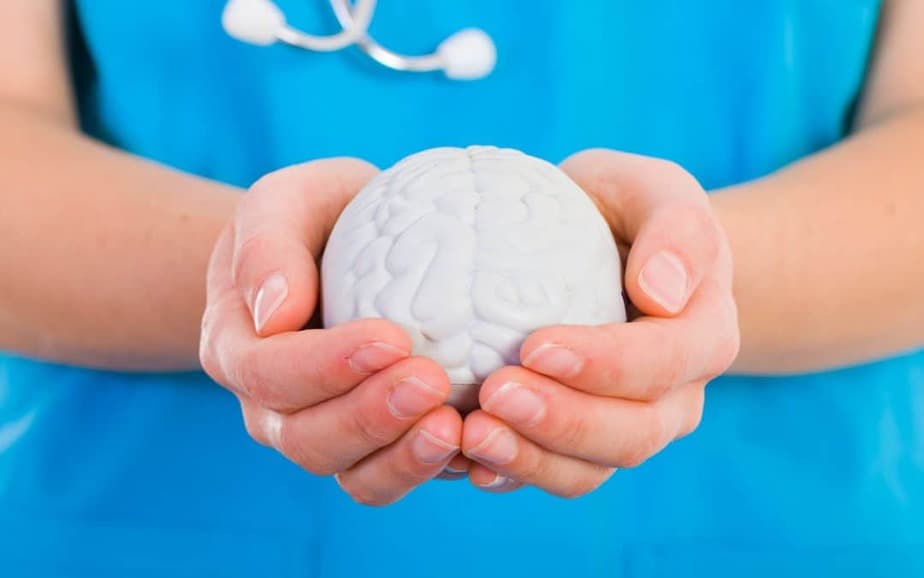
Dementia Diagnosis
Dementia Diagnosis Authored by Michelle Eliason, MS, OTR/L, CKTS, C.D.S.What do I do if I just received a dementia diagnosis?'Dementia' is a general term for memory deficits or memory changes. It is important to note that 'dementia' is not a synonym for any other...
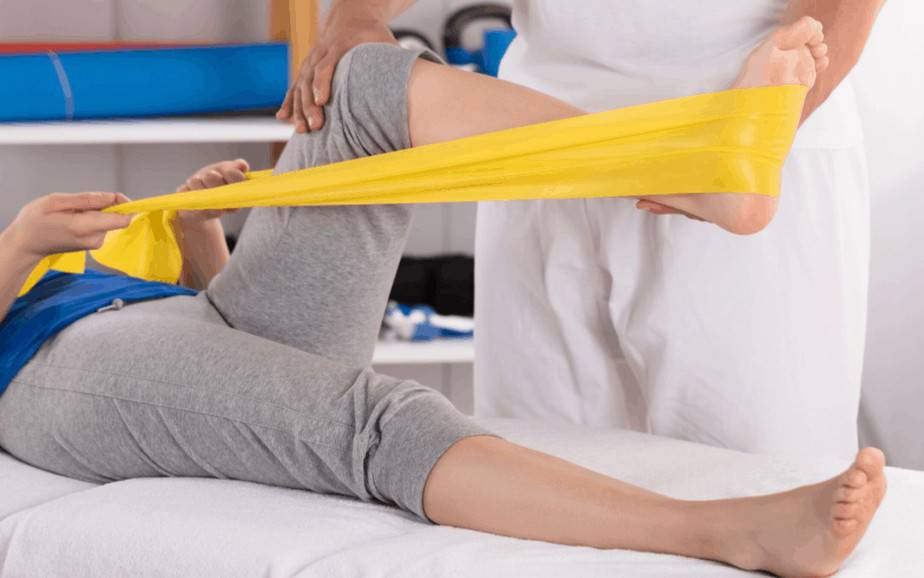
Joint Replacement Rehabilitation
Joint Replacement Rehabilitation Authored by Michelle Eliason, MS, OTR/L, CKTS, C.D.S.What is the role of outpatient occupational therapy for a joint replacement?Outpatient occupational therapy, like every other outpatient rehabilitation, is a specialized area of...
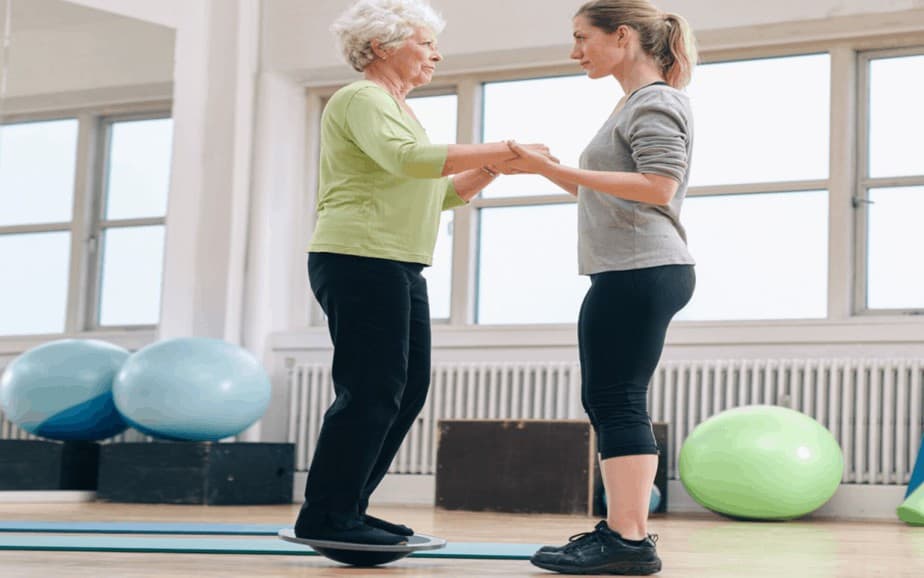
Buffalo Rehab
Buffalo Rehab in West Seneca, NY Authored by Michelle Eliason, MS, OTR/L, CKTS, C.D.S.Buffalo Rehab Option : Buffalo Occupational TherapyBuffalo Occupational Therapy is a specialized buffalo rehab option and was founded in October of 2018 through the Aging with...
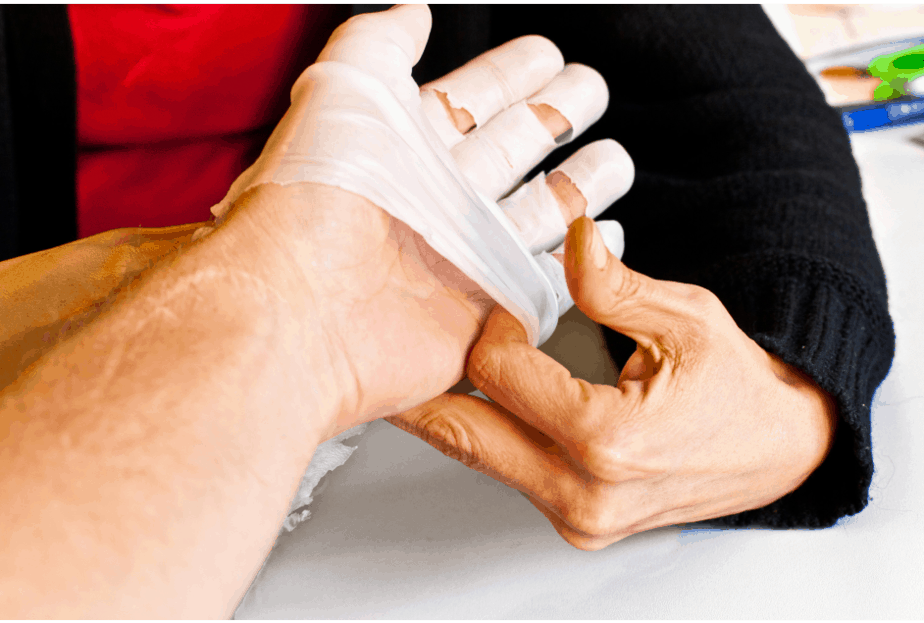
Outpatient Occupational Therapy
Outpatient Occupational Therapy Authored by Michelle Eliason, MS, OTR/L, CKTS, C.D.S.What is the role of outpatient occupational therapy? Outpatient occupational therapy, like every other outpatient rehabilitation, is a specialized area of rehab that makes the ability...
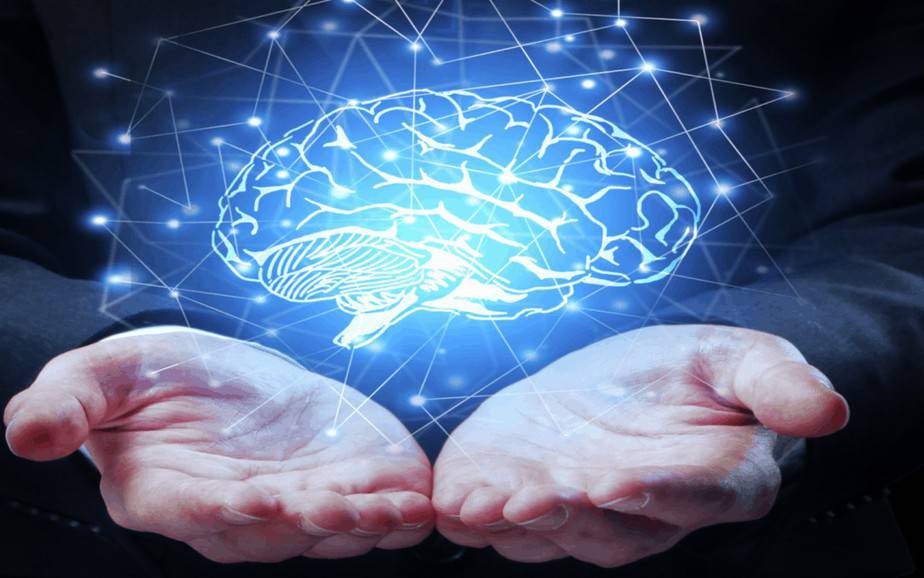
Stroke Rehabilitation
Stroke Rehabilitation Authored by Michelle Eliason, MS, OTR/L, CKTS, C.D.S.In search of an outpatient neurological stroke rehab program in Buffalo, NY?When should you have stroke rehabilitation?Depending on how big your stroke was and the area of the brain your stroke...
Adrianna Brown, MS, OTR/L
Evaluating Therapist
Research interests: Yoga applied to progressive neurodegenerative and degenerative conditions
Current Credentials and Affiliations
-
Registered and Licensed Occupational Therapist (OTR/L)
-
200 Hour Yoga Certification through YogaFit
- YogaFit for Wellness 100-Hour Teacher Training
-
Functional Training Certification through American Council of Exercises
BIO
Adrianna graduated from D’Youville College in 2020. Following graduation, she worked in SNF/subacute rehabilitation for approximately one year. During her time in SNF, she learned the value Occupational Therapy has in addressing progressive neurological conditions, acquired neurological conditions, chronic pain, and muscle injury. Adrianna had the goal to transition to outpatient occupational therapy in hopes to address patients’ needs before requiring higher level of care.
Adrianna has obtained her 200 Hour Yoga Certification and is working on a 100 Hour Wellness track. This speciality training addresses the application of yoga for people with neurological conditions, heart conditions, chronic pain, and diabetes. She is also working on become a Stretch and Flexibility Coach.
Adrianna has a special interested in combining her yoga background with her occupational therapy background. She is continuing to research the various uses of yoga interventions for the diagnosis occupational therapy practitioners work with on a daily basis.
Early Memory Loss and Confusion
Early Memory Loss and Confusion Authored by Michelle Eliason, MS, OTR/L, CKTS, C.D.S.Symptoms of Early Memory Loss and Confusion You Should Take SeriouslyIf you are experiencing signs and symptoms of early memory loss, it is important to take them seriously. Although...
Dementia Diagnosis
Dementia Diagnosis Authored by Michelle Eliason, MS, OTR/L, CKTS, C.D.S.What do I do if I just received a dementia diagnosis?'Dementia' is a general term for memory deficits or memory changes. It is important to note that 'dementia' is not a synonym for any other...
Joint Replacement Rehabilitation
Joint Replacement Rehabilitation Authored by Michelle Eliason, MS, OTR/L, CKTS, C.D.S.What is the role of outpatient occupational therapy for a joint replacement?Outpatient occupational therapy, like every other outpatient rehabilitation, is a specialized area of...
Buffalo Rehab
Buffalo Rehab in West Seneca, NY Authored by Michelle Eliason, MS, OTR/L, CKTS, C.D.S.Buffalo Rehab Option : Buffalo Occupational TherapyBuffalo Occupational Therapy is a specialized buffalo rehab option and was founded in October of 2018 through the Aging with...
Outpatient Occupational Therapy
Outpatient Occupational Therapy Authored by Michelle Eliason, MS, OTR/L, CKTS, C.D.S.What is the role of outpatient occupational therapy? Outpatient occupational therapy, like every other outpatient rehabilitation, is a specialized area of rehab that makes the ability...
Stroke Rehabilitation
Stroke Rehabilitation Authored by Michelle Eliason, MS, OTR/L, CKTS, C.D.S.In search of an outpatient neurological stroke rehab program in Buffalo, NY?When should you have stroke rehabilitation?Depending on how big your stroke was and the area of the brain your stroke...
